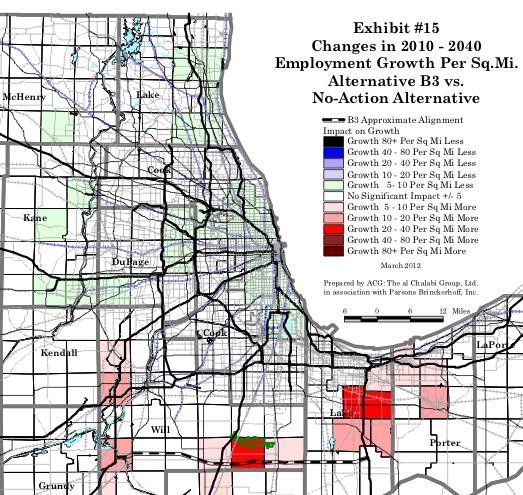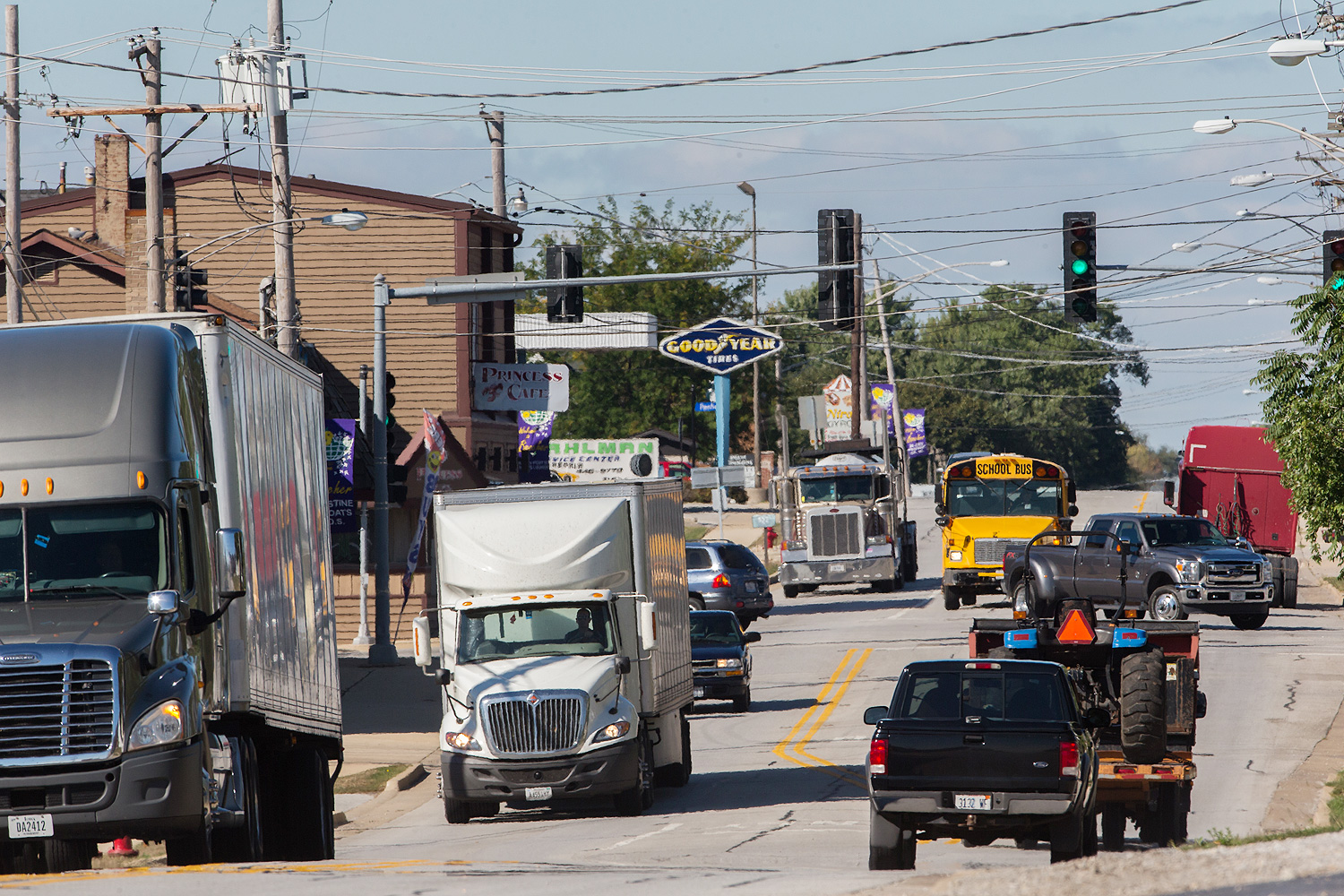This afternoon the Chicago Metropolitan Agency for Planning (CMAP) is holding a vote on whether to endorse the Illiana Expressway, a project that's gotten much less attention than I would have expected. If an organization you maybe haven't heard of voting to endorse a project that's been in the planning stages for several years sounds pretty minor, CMAP's collective voice is important, because it's where representatives from the city, state, and its transit agencies get together to hash these things out. And they have the power to kill projects, like the Prairie Parkway (aka the "Hastert Highway," after its patron):
The $1 billion Prairie Parkway, a proposed highway in the Chicago region's far outer-ring exurbs that lost momentum when former U.S. House Speaker Dennis Hastert left office, was officially declared dead Thursday.
The Federal Highway Administration rescinded its approval of the parkway, which would have cut through miles of farmland, after it failed to receive a high funding priority in the Chicago Metropolitan Agency for Planning's "Go to 2040'' land-use and transportation blueprint for the seven-county area.
The Illiana would connect I-55 with I-57 and I-65, in a route running east-west through the far south suburbs. One level of opposition comes from the city and county, because of this:

That's IDOT's project of the Illiana on employment: slight job loss throught the city and scattered throughout the north and west suburbs, countered by growth in the rural areas to the south and east of the city. Will County and Lake County would be the big winners in employment, with around 3,500 jobs projected for 2040; Chicago is projected to lose 1,187 jobs. Unsurprisingly, representatives of the mayor and county commissioner are expected to vote against it.
Greg Hinz spoke with the IDOT secretary about the project and came away unimpressed at the final net jobs total projected by the department: 940 jobs over 40 years. The defense was:
Beyond that, the project should help Chicago remain competitive with Nashville and other cities in attracting intermodal facilities that require good, reliable, quickly moving transportation, she argued.
The south suburbs "are a freight corridor," she said. "This road will help us compete regionally and nationally."
As I mentioned the other day, that's kind of what Chicago is better at than any other city: moving freight in and out. That builds on the city's natural and historical advantages—its overwhelming rail advantage, but also its ports, airports, and interstates. What was a geographical advantage became an infrastructural advantage, and it's helped the city ride out the struggles of the industrial Midwest as manufacturing has moved south, not just across the border but into the American South as well.
But Southern cities have established their own strong intermodal industries, particularly Memphis—its airport is second in the world in cargo traffic, thanks in large part to FedEx—where they're also freaking out about the decline in federal infrastructure funding, the state's more conservative approach to infrastructure funding, and its impact on the state's ability to expand that industry:
We are also alarmed by word last month from Tennessee Transportation commissioner John Schroer that funding for road projects from the federal highway trust fund could end in 2015. Tennessee is a pay as you go state on road projects at a time when most other states use bonds and the ensuing debt they incur for road projects. The end of trust fund money would see the state’s transportation budget go from $900 million to $600 million.
Schroer is right when he talks about the intermodal industry locally going to “hell in a hand basket” without the federal funding to build the right roads to make the right connections.
It's a real fear, driving the desire to lock in the region's advantage through the first half of the 21st century. But the downside of Illinois not being a pay-go state, and being in substantial debt besides, is that it's hard to front the money for projects like the Illiana. Enter the public-private partnership, a concept that's taken a drubbing in Chicagoland.
And not just in Chicago. Muniland journalist Cate Long rounds up recent privatized toll road projects in trouble throughout the country—including the Indiana toll road, which has been teetering on the edge of bankruptcy.
As Steven Vance noticed, even Toll Roads News came out against the project, putting it in the context of recent successful and unsuccessful toll roads:
Fringe area toll roads have a pretty consistent record of disappointing returns or financial failure – South Bay Expressway east of San Diego CA, Greenville Southern Connector SC, Camino Columbia Toll Road Laredo TX, SH130 5&6 Austin-San Antonio TX, Pocahontas Parkway Richmond VA, Dulles Greenway, northern Virginia.
The only exceptions are in exceedingly high population growth areas of the country where such pikes survive a few early lean years until development arrives. The Veterans Expressway north of Tampa and the Sawgrass northwest of Miami and outer belts in Houston are examples of that.
The Illiana decision, little attention as it's gotten, is really pretty important and interesting. America doesn't have the same romance of the road as it did during the 20th century, due in no small part to gas prices; households are pulling into the city from the suburbs; and suburbs themselves are reorganizing to make themselves more compact and urban, around transit connections to larger urban areas. At the same time, the country is going through a period of relative austerity due to both economic conditions and political ideology, making projects like the Illiana more difficult still.
On the other side are the governor, Mark Kirk, and other state pols, as well as the region's legacy as a transportation and freight hub, a surviving blue-collar industry that maintains a strong pull as others collapse around it. Quiet as it's kept, the Illiana decision is a major one for how the region will connect its past with its future.



